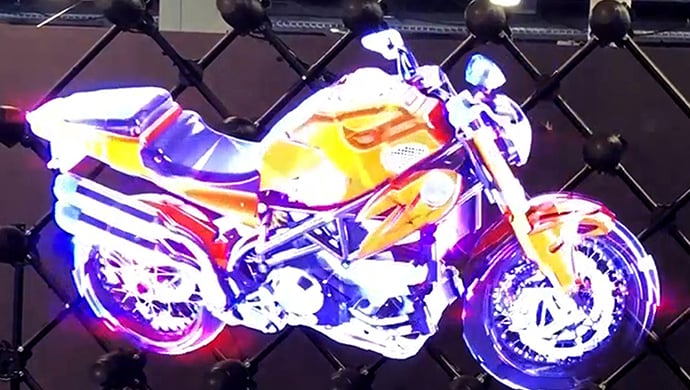Kino-mo makes holography accessible through Hypervsn.

Holography is a technology that has always fascinated and intrigued humans. Pop culture attests to this – from being used for communication in Star Wars and Resident Evil to entertainment in The Jetsons – with holography being a part of what we humans believe to be the apex of technological innovation.
From being a mere theory in 1947, holography has come a long way not just in fiction but also in real life. But what used to only be a technology used in laboratories and, to some extent, art galleries and museums, is now being brought to the public by Kino-mo.
Kino-mo has developed Hypervsn, a complete LED-based solution that combines a smart management platform and a lightweight projection unit that projects realistic 3D visuals into thin air.
Also read: 4 unconventional digital marketing tips for experts and starters alike
Hypervsn is designed to dazzle its audience – a feat that is undoubtedly difficult in today’s world of constant innovation and technological advancement – ensuring that they are engaged.
What does this mean for the businesses, then? A better vehicle to get their message across, for one.
Businesses finally catching up
One can say that the audience is changing, that businesses are catching up to a market that is becoming more and more visual. In reality, visuals have always been an important aspect of human learning and engagement.
Consider these:
- 90 per cent of information transmitted to the brain is visual
- The human brain processes visuals 60,000 times faster than text
- Visual memory is encoded in the same part of the brain where emotions are processed
What these facts show is that the increase in visuals for use in advertising and promotions have little to do with changing audience preference and more to do with businesses utilising the available technology to more effectively reach and engage with their market.
Also read: The 10 commandments of rockstar online branding
If over 80 per cent of consumers can remember a simple video ad they viewed the past thirty days, imagine what an incredibly colourful hologram can do.
This is precisely Kino-mo’s goal. They developed Hypervsn for businesses to use to reinforce the impact of their business, make them stand out, and engage with their audience at an emotional level.
Scalable technology
In the history of development of holography, the barrier to it’s utilisation – like with most technology – is its scalability. Without getting into the technical aspects of it, projecting a hologram-type display requires manipulation of light, which requires specialised equipment that are costly.
Kino-mo has made the technology more accessible with Hypervsn with a system that has two aspects to it: the device and the platform.
The device is a lightweight, HD quality projection unit that is designed to work 24/7 and running at only 65W of energy consumption. The platform is a proprietary cloud-based management system that allows remote upload and management of content, multi-device synchronisation, content and campaign scheduling, and data analytics among other features.
The result is a cost-effective, scalable, and easy to manage campaign system that presents companies and brands with a unique opportunity to engage audiences with visually stunning holographic displays of up to three metres.
Kino-mo is an award-winning British company developing hi-tech visual solutions. Hypervsn is a product of Kino-mo, its early versions have successfully been used by global brands like McDonald’s, BMW, and Virgin Media, gaining recognition from several global media companies.
After its official launch in 2017, Hypervsn has inked deals with distributors in over 20 countries, boasting of a client base that includes global brands across different industries such as automotive, consumer electronic, and even fast-moving consumer goods.
–
This article is produced by the e27 content marketing team, sponsored by Kino-mo
The post A technology 70 years in the making is finally coming to the public appeared first on e27.